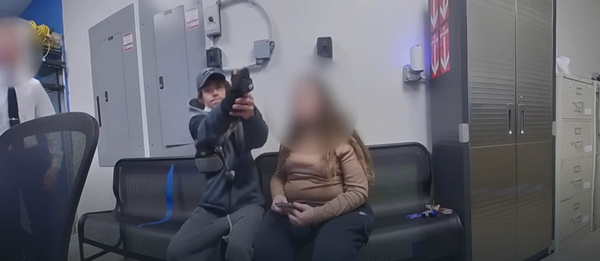/Intel%20Corp_%20badge%20holder-by%20hasrul_rais%20via%20Shutterstock.jpg)
I’m not sure how I feel yet about the United States government taking a 10% stake in Intel (INTC), a U.S. semiconductor leader.
I’ll let the political and Wall Street pundits figure that out. All I care about is making money while not losing too much in the process. So, let’s look at a way to test the market’s willingness to bid up INTC over the next 12 months, without any downside risk.
No, this is not an infomercial. It is another conservative way to use option collars! Let’s chart INTC, then look at how one might seek to have their INTC cake and eat it too.
INTC’s Chart May Be Pointing Higher
Full disclosure: I began writing this article on Thursday, Aug. 21, before it was official that Uncle Sam will now own a 10% stake in INTC. So, the pricing and charts reflect the more-than-5% rally in INTC that happened Friday during the regular trading session.
The daily chart looks OK. Not great, but OK. The biggest risk to me in INTC is that the buy the rumor and sell the news time frame just ended. The stock rallied 30% in 3 weeks to start August, as this story started to get more credible. At the $25 area, it is at risk of a quadruple top.
And that is why I always chart in multiple time frames. Because the weekly chart below is a very different look. One that indicates a potential double in value for INTC over the next couple of years.
More importantly, in my quest to identify stocks that do not simply move in sync with the S&P 500 Index ($SPX) (thus making them non-alpha producers), INTC’s weekly chart stands out to me. The top/main part of the chart shows a gradual bottom forming. But the PPO indicator in the lower portion of the chart is edging ever higher. That’s a good sign to me.
How to Collar INTC Stock
However, in my risk-manager style, I look at a situation like INTC and summarize it as follows:
- I could be onto something, based on what the stock is telling me, regardless of what the U.S. government has planned for it.
- There is clear upward potential, but it is just potential.
- The stock could easily retrace its recent move, and that would cost me 25% or more of my INTC investment.
Enter the collar. Here’s one I found.
There are so many strategies around collaring stocks, and INTC represents a great opportunity to show one to you. In this case, I’m using the collar simply to try to get off to a good start on what would likely be a longer-term position. My upside out to 9/18/26, over 12 months from now, is less than 9%. I can get a ton more upside, 30%-40%, if I’m willing to risk perhaps a 10%-12% loss. But I’m not in this example.
Here’s the kicker: My worst-case scenario is a 0.6% gain. As in no possible loss if held through 7/18/26. There’s the opportunity cost, since I could make 4% or more in T-bills. But again, this is a strategy about getting in, avoiding an adverse outcome early on, and likely adding to the position (collared or otherwise) if INTC climbs above that $27 call strike price over the next year or so.
And my cost is only 0.2%. I could say this is like buying a floating rate INTC bond. However, the goal is to start off on the right foot with a stock that could easily be a political football in the year ahead.
Summary: a tight collar, near-zero out of pocket cost, making a profit in the best and worst cases. And as I always say, there is no rule against buying more INTC at any point. I like the reward-risk tradeoff here.
More importantly, this is not an isolated example. I could build a whole portfolio of these. It all depends on what you want out of the capital you invest. At least you now realize that risk doesn’t even have to mean risk of loss.
On the date of publication, Rob Isbitts did not have (either directly or indirectly) positions in any of the securities mentioned in this article. All information and data in this article is solely for informational purposes. For more information please view the Barchart Disclosure Policy here.






